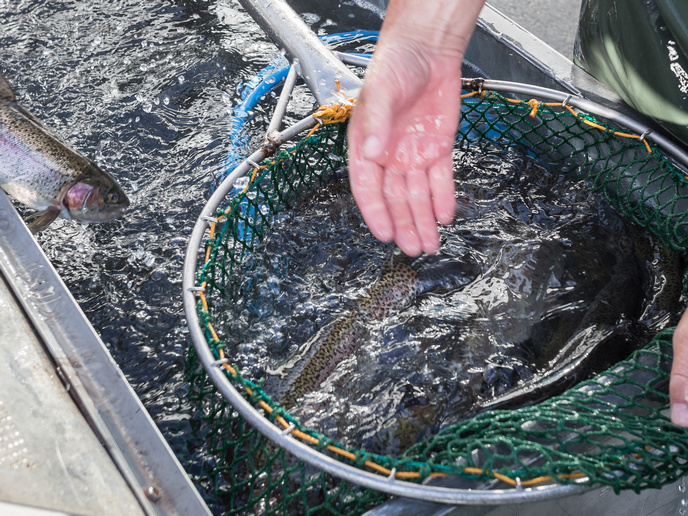Genomics key to achieving sustainable aquaculture
Aquaculture involves the breeding and harvesting of fish, shellfish and aquatic plants. It is one of the fastest-growing food sectors – in the EU alone, aquaculture is worth around EUR 3.9 billion, and employs some 57 000 people. Keeping fish healthy is a vital element of profitable production – a contagious infection can devastate a business. Producers are constantly on the lookout for possible outbreaks, and for ways to breed more resistant fish. “This is usually achieved by testing fish with pathogens in a controlled environment to see which fish are susceptible or resistant to the challenge,” says AQUA-FAANG project coordinator Sigbjørn Lien from the Norwegian University of Life Sciences. “This can be costly, and is obviously not good for the fish, as many die.”
Breeding disease-resistant fish
The AQUA-FAANG project sought to develop new tools to help breed disease-resistant fish in a more efficient and humane way. To achieve this, the project took an in-depth look at the genetic make-up of six species of fish of great importance for European aquaculture. The idea was that this would expand our knowledge of the genetic basis of disease resistance, and potentially lead to more precise breeding approaches to improve the fish health without harming fish. “For example, we wanted to identify regulatory regions in the genome responsible for turning certain genes on and off,” explains Lien. “When you get infected by a virus for example, this can trigger the switching on or off of some genes.” Identifying genetic variation in such regions gives breeders a head start when it comes to identifying fish that are more or less likely to be disease-resistant.
Advancing the field of fish genomics
AQUA-FAANG brought together experts from academia and industry to produce thousands of functional genomic data sets. These data sets focused on the six most important fish species in European aquaculture – Atlantic salmon, rainbow trout, sea bass, sea bream, turbot and common carp. “All the data produced has been made public,” adds Lien. This data is available via Ensembl, a genome browser that supports research in functional and comparative genomics. Lien and his team hope that the data will be used by other researchers to advance the field of fish genomics.
Targeted fish breeding programmes
At the practical level, AQUA-FAANG has maintained a data portal, which contains all the project’s activities and results. The project has also developed a mystery game, an interactive adventure designed to immerse players in the secrets and innovations of the AQUA-FAANG project. “Our resources should be especially useful for breeding companies, helping them to organise breeding programmes targeted at improved disease resistance and growth,” says Lien. “This could contribute to making the sector more sustainable.” AQUA-FAANG was funded by the EU in the same call as two other projects – BovReg, which focused on the cattle genome, and GENE-SWitCH, which focused on the regulatory genomes of pigs and chickens. These projects have combined their efforts to form EuroFAANG. This umbrella project aims to foster closer relationships between European genomic research projects and encourage the sharing of data and tools.
Keywords
AQUA-FAANG, genomics, aquaculture, fish, disease, Ensembl, EuroFAANG

